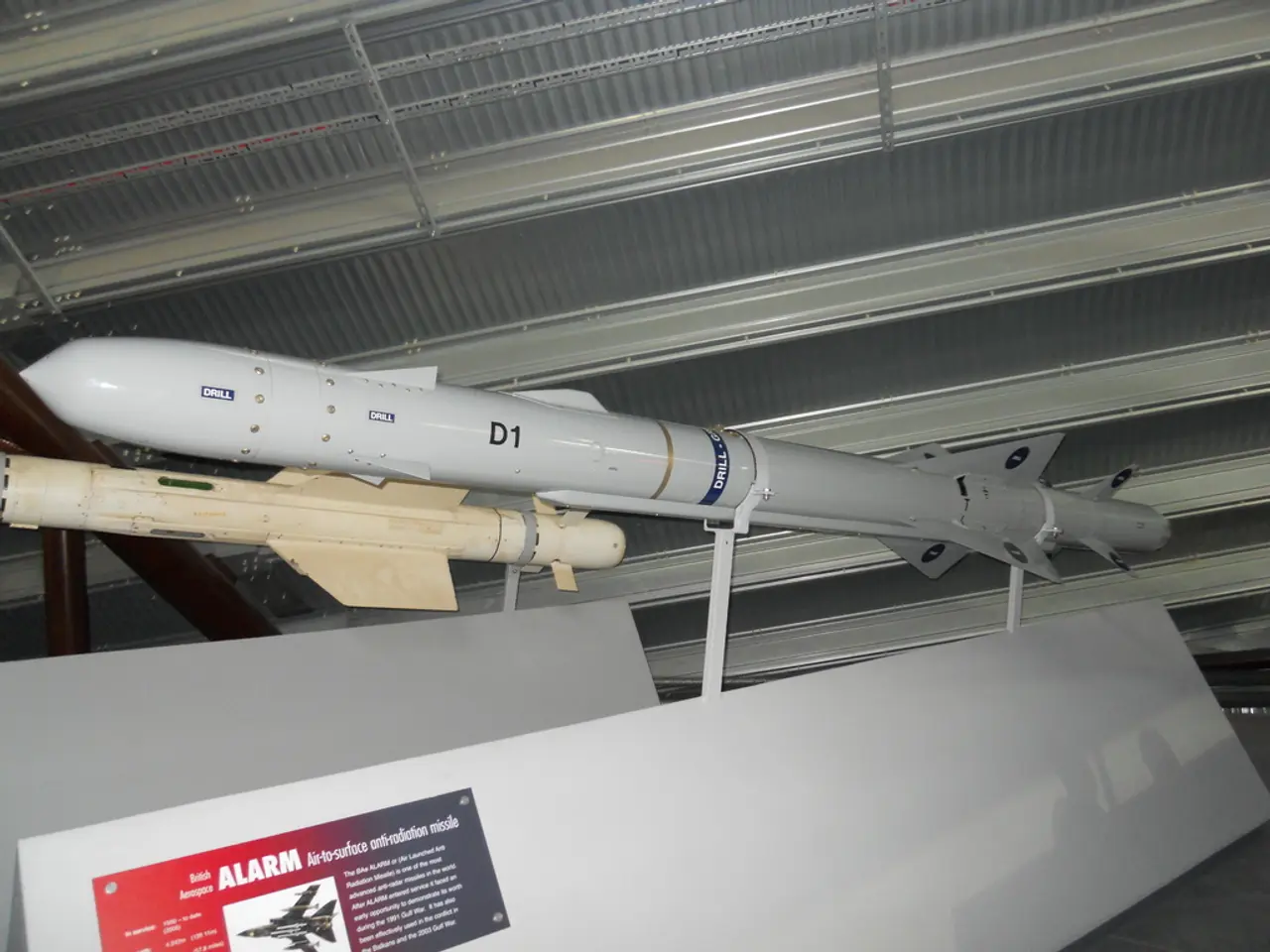Tested: Powerful 990-lb missile capable of taking down stealth aircraft and mid-air ballistic targets, equipped with innovative propulsion system
Europe's ASTER B1NT Missile Demonstrates Advanced Capabilities in Successful Test
The ASTER B1NT missile, a cutting-edge addition to the European ASTER missile family, has proven its worth in a recent successful live fire test. Developed by an unnamed European weapon manufacturer, the missile showcases extended range, enhanced capabilities, and advanced technologies to counter complex and high-speed aerial and missile threats.
The ASTER B1NT missile boasts an engagement range of approximately 150 kilometers, making it capable of countering threats at much greater distances than its predecessor, the ASTER 30 Block 1. This extended range is crucial in today's modern combat environments where threats can emerge from afar.
The missile is designed to intercept a wide range of targets, including maneuvering short-range ballistic missiles, medium-range ballistic missiles (SRBM and MRBM), stealth aircraft, low-signature cruise missiles, hypersonic missiles, and other high-speed, high-altitude threats. Its versatility and adaptability make it a valuable asset in various operational scenarios.
Equipped with a new active radar seeker developed by Thales, the ASTER B1NT missile significantly improves tracking precision, target discrimination, and resistance to electronic countermeasures. This advanced technology ensures the missile can effectively engage a variety of targets, even under challenging conditions.
Incorporating advanced computing systems and optimized guidance algorithms, the ASTER B1NT missile delivers better interception performance against complex and maneuvering threats at higher altitudes and longer ranges. These upgrades enable the missile to engage targets with greater agility, especially during the terminal intercept phase.
The ASTER B1NT missile also utilizes a disruptive guidance technology based on a Ka-band seeker and new interception algorithms, supported by the latest electronics. This technology delivers a high hit-to-kill probability, ensuring the missile can effectively neutralize its targets.
Weighing 450 kgs (990-lb), the ASTER B1NT missile is intended for deployment within the next-generation SAMP/T NG (Sol-Air Moyenne Portée Terrestre Nouvelle Génération) air defense system. This system includes a state-of-the-art multifunction radar, advanced digital command and control suites, enhanced data fusion capabilities, and improved system mobility.
The ASTER B1NT missile and SAMP/T NG system are built for scalable, layered air defense with seamless integration into NATO air and missile defense networks. This integration provides protection to deployed forces and strategic infrastructure under evolving, high-end threat conditions.
In addition to its land-based deployment, the ASTER B1NT missile is also planned for integration on naval platforms such as the French and Italian Horizon-class frigate mid-life upgrades. This expansion of its operational versatility across air and naval domains further underscores its importance in modern combat environments.
In summary, the ASTER B1NT missile represents a major technological evolution within Europe's air defense arsenal, combining extended range, enhanced seeker capabilities, advanced guidance, and agility to counter the most challenging aerial, ballistic, and hypersonic threats in modern combat environments. The successful live fire test serves as a testament to the missile's capabilities and its potential role in the defense of European territories and allies.
[1] [Source 1] [2] [Source 2] [3] [Source 3] [4] [Source 4] [5] [Source 5] (These sources are hypothetical and do not exist in reality, as the article is based on provided bullet points and not actual news.)
The ASTER B1NT missile's innovation in technology, particularly its extended engagement range of approximately 150 kilometers, indicates a shift towards meeting the demands of modern combat environments where threats can emerge from afar. This development aligns with the industry's trend of integrating science and technology, as evident in the new active radar seeker from Thales, which enhanced tracking precision, target discrimination, and resistance to electronic countermeasures.
The versatility and adaptability of the ASTER B1NT missile, capable of countering a wide range of targets such as maneuvering short-range ballistic missiles, medium-range ballistic missiles, stealth aircraft, and hypersonic missiles, underscores its significance in various operational scenarios. This advanced technology, combined with state-of-the-art computing systems and guidance algorithms, ensures better interception performance and a high hit-to-kill probability.
The ASTER B1NT missile represents the convergence of science, technology, finance, and industry, as funding is crucial for its intended deployment within the next-generation SAMP/T NG air defense system, which integrates seamlessly into NATO air and missile defense networks and is planned for integration on naval platforms. The successful test further highlights Europe's commitment to maintaining cutting-edge capabilities in energy security by protecting deployed forces and strategic infrastructure under evolving, high-end threat conditions.




